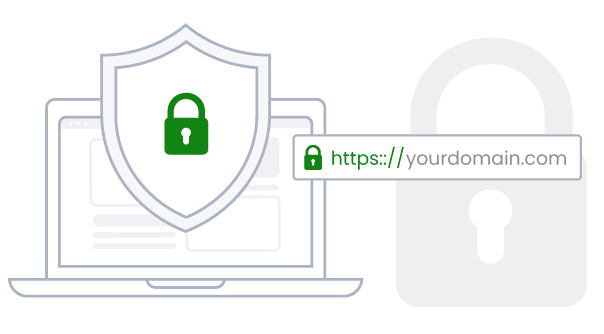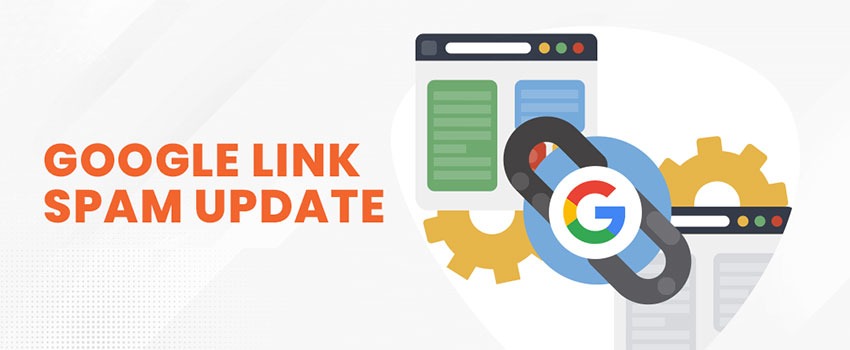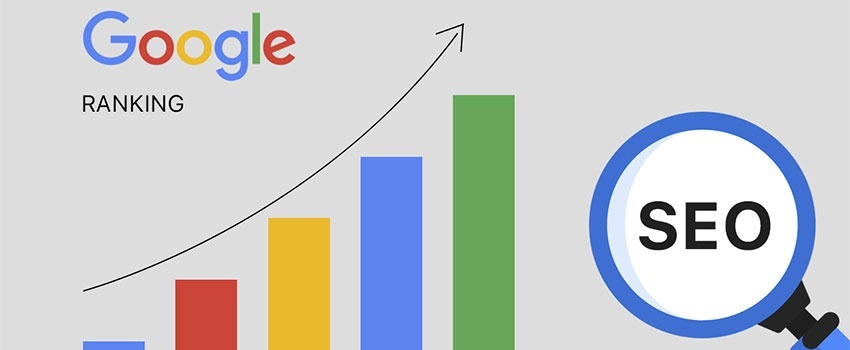10 Ways You Can Build Online Trust and Reputation
Trust and reputation they say is everything. When you are trusted you can enjoy some extraordinary privileges than when you have a doubtful reputation which turns people away from your website. Operating a successful company of any size requires managing your online reputation, even if your business is a strictly brick-and-mortar one. This includes many aspects, beginning with building brand awareness regarding your products and services.
Read more::
How to Boost email opening and clickthrough rates
Leverage your Branding for eCommerce Growth
While reputation management was once primarily a subsection of corporate human resources departments, the internet has changed the definition forever. People communicate regularly about their levels of satisfaction. This post should help you begin to establish your reputation, particularly if you have made no other efforts to increase public trust in your brand.
What exactly is your online presence and reputation and why does it matter? Your brand identity is established by the total of the internet messages regarding your personality and your company. The business website and blog, social media posts and public interactions are all available for interested consumers to see.
Careful crafting of your content, expert knowledge and elevated customer service are among the ways you can establish a positive reputation and gain consumer trust. You need to develop a systematic plan for establishment and maintenance of your reputation.
If you have not yet created a mission statement and goal-related documents, do so. Reflect your company vision in your online endeavors. From the colors and fonts used for your logo to the words chosen when handling criticism, you need to have a cohesive voice.
Each post or interaction should advance your goals. Before adding anything to your site or even responding to social media posts, confirm that it is in line with your brand image and goals. This can be especially useful when dealing with customer complaints.
Utilize the services of a web design expert and SEO agency to ensure that your business site is attractive and relevant. Potential customers should find it easy to navigate and to learn about your history and goals. Those who are experienced with making your website and content are well worth the expense.
So, generally we here enumerate the most critical steps you will never ignore in building your online reputation.
Also read:
New Business Startup Considerations and Success Factors
25 Modern Web Design Trends Recommended for You
How to Build Your Online Reputation
1. Monitor your online reputation and presence
Monitoring your brand online helps you find out what your brand image looks like right now. That’s a critical step – if you don’t know what’s working and what’s not, it’s tough work trying to improve anything.
What you monitor depends on where your brand is present. Do people talk about you on social media, on forums, or on review sites and how much do you know about this?
2. Be Consistent in Doing What You Do
This is applicable to services, content development and every aspect of your business that relates with your eternal public. If you roll out a weekly newsletter be sure to produce them weekly. It is better to have them released on a particular day of the week as this help both your visitors and the search engines on what you do.
3. Work with influencers
Influencer marketing has been a marketing trend for a while now. People love to hear from experts and industry influencers who’ve made it. Working with great influencers boosts your online reputation in these three ways:
First, it expands your reach. I haven’t heard of you, but I’ve heard of them.
Second, it gives you credibility. I don’t know you or your brand, but I trust them.
Third, it allows for cross-promotion. I like them, maybe I’ll like you, too.
You shoild have so much to gain from being mentioned by influencers,
4. Be Transparent
A big misconception about doing business online is that it isn’t personal. But you need to say hello and introduce yourself. Let customers know who you are by building a comprehensive “about us” page. Talk about your business, how you got started and what your business has to offer. Don’t forget to include photos as well as your business address and contact information.
5. Social Media
Not only do you need to be online, but you also need to be on social media. However, you don’t need to be on every social media platform out there. Instead, develop a social media presence on the platforms your target market likes to spend time on, whether that’s Facebook, Twitter, LinkedIn or Google+.
6. Take Advantage of Testimonials and reviews
Why toot your own horn when you can have satisfied customers do it for you? Displaying customer testimonials is a great way to show potential customers all the other satisfied clients you’ve had. When possible, display third-party reviews such as those on Yelp or Google. If you find a negative review, turn it into a positive by addressing the complaint in a timely, friendly and professional manner. How you handle negative reviews can go a long way toward preserving a good online reputation.
7. Portfolio
In addition to showing a list of satisfied customers, provide links to the work you have done. Be sure to include any relevant items such as before/after photos, case studies, customer logos and links to customer sites as references.
8. Trust seals
Online consumers are savvy and want to feel safe when they are shopping. No one wants to enter a credit card number on a sketchy website. Visible trust signals such as BBB, ssl certificate, and malware scan seal on your website are all proven to build trust and increase conversions.
9. Keep Your Website Secure
A security breach leading to a hack can be one of the most damaging to your reputation. Customers and visitors want to feel secured when theyy visit your website and so you must avoid any security breaches..
Here is a simple guide to website security:
- Keep Your Software Updated
One way to keep your website secure and probably the best way is to run the most recent version of your software. It is also important that you run a secured version of your website. We have treated this in the article on safe Joomla updating.
- Passwords
There are many lists of breached passwords online. Hackers will combine these with dictionary word lists to generate even larger lists of potential passwords. If the passwords you use are on one of those lists, it is just a matter of time before your site is compromised.
Our tips for you to have a strong password are:
- Do not reuse your passwords. Every single password you have should be unique. A password manager can make this easier.
- Have long passwords. Try longer than 12 characters. The longer the password is, the longer it will take a computer program to crack it.
- Use random passwords. Password-cracking programs can guess millions of passwords in minutes if they contain words found online or in dictionaries. If you have real words in your password, it isn’t random. If you can easily speak your password, it means that it is not strong enough. Even using character replacement (i.e. replacing letter O with number 0) is not enough.
There are several helpful password managers out there such as, “LastPass” (online) and “KeePass 2” (offline).
These brilliant tools store all your passwords in an encrypted format and can easily generate random passwords at the click of a button. Password managers make it possible to use strong passwords by taking away the work of memorizing weaker ones or jotting them down.
- Sensible User Access
This rule only applies to sites that have multiple users or logins. It’s important that every user has the appropriate permission they require to do their job. If escalated permissions are needed momentarily, grant it. Then reduce it once the job is complete. This is a concept known as Least Privileged.
For example, if someone wants to write a guest blog post for you, make sure their account does not have full administrator privileges. Your friend’s account should only be able to create new posts and edit their own posts because there is no need for them to be able to change website settings.
Having carefully defined user roles and access rules will limit any mistakes that can be made. It also reduces the fallout of compromised accounts and can protect against the damage done by ‘rogue’ users. This is a frequently overlooked part of user management: accountability and monitoring.
- Change the Default CMS Settings!
Today’s CMS applications (although easy to use) can be tricky from a security perspective for the end users. By far the most common attacks against websites are entirely automated. Many of these attacks rely on users to have only default settings.
This means that you can avoid a large number of attacks simply by changing the default settings when installing your CMS of choice.
For example, some CMS applications are writeable by the user – allowing a user to install whatever extensions they want.
There are settings you may want to adjust to control comments, users, and the visibility of your user information. The file permissions, (which we will discuss later) are another example of a default setting that can be hardened.
You can either change these default details when installing your CMS or later, but don’t forget to do it.
- Select the Extensions You Install
The CMS applications extensibility is something webmasters usually love, but it can also pose one of the biggest weakness. There are plugins, add-ons, and extensions that provide virtually any functionality you can imagine. But how do you know which one is safe to install?
Here is a quick guide to deciding which extensions to use:
- Consider when the extension was last updated: If the last update was more than a year ago, get concerned that the author has stopped work on it. Use extensions that are actively being developed because it indicates that the author would at least be willing to implement a fix if security issues are discovered. Furthermore, if an extension is not supported by the author, then it may stop working if core updates cause conflicts.
- The age of the extension and the number of installs: An extension developed by an established author that has numerous installs is more trustworthy than one with a few number of installs released by a first-time developer. Not only do experienced developers have a better idea about best security practices, but they are also far less likely to damage their reputation by inserting malicious code into their extension.
- Legitimate and trusted sources: Download your plugins, extensions, and themes from legitimate sources. Watch out for free versions pirated and infected with malware. There are some extensions whose only objective is to infect as many websites as possible with malware.
10. Avoid the Google Penalties
Building a good reputation for your website and maintaining that reputation will mean you avoid the penalties from Google and any other website assessment platform. Google penalties are usually related to SEO. You will need to maintain a healthy website in terms of your SEO practices to be relevant and not penalized by Google.
Also read:
10 Tips to Guide Your Website Security Policy
A Guide to Local Internet Marketing
How Your Content Can Be “Featured” in Google SERP
Conclusions
Reputation loss can be very damaging and there is little you can do to improve the ranking of a website that has got a damaged reputation. Basically, there are some preliminary steps you must take to avoid a bad online reputation. Begin with providing useful content. Ensure that your website deliver useful content that answer user questions in satisfactory ways.
Avoid spamming. Mass emailing to people who did not subscribe to receive emails from you can be a red flag.
Ensure that you run a healthy website by keeping your CMS up-to-date and ensure your plugins and extensions are up-to-date and compatible with your software versions.











